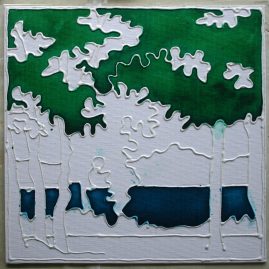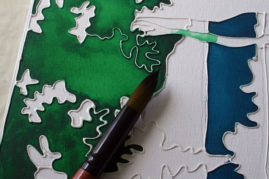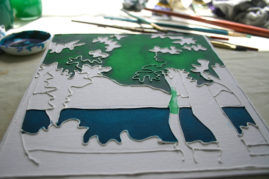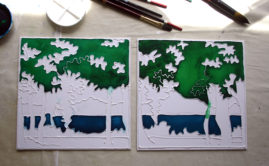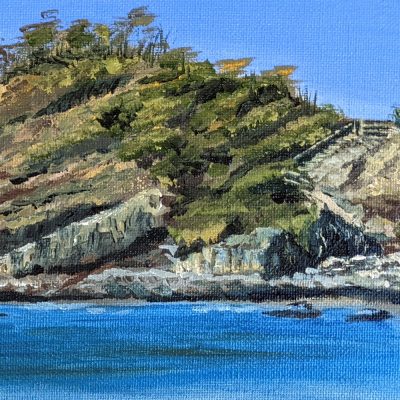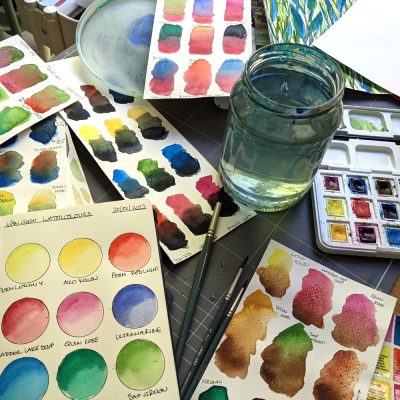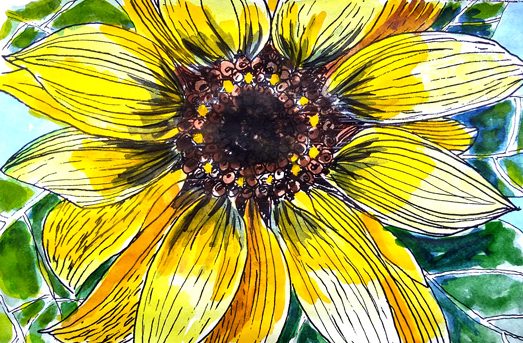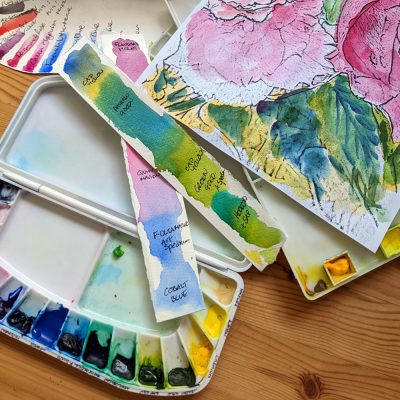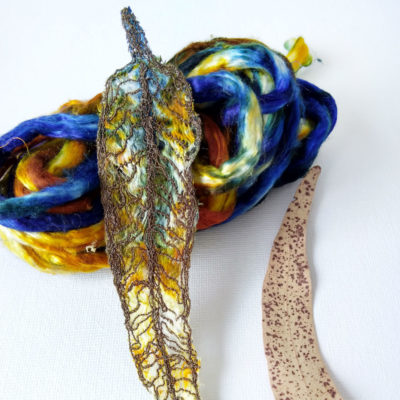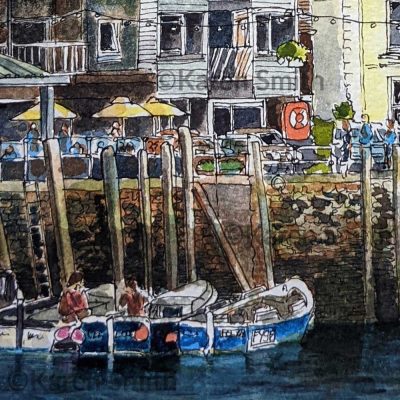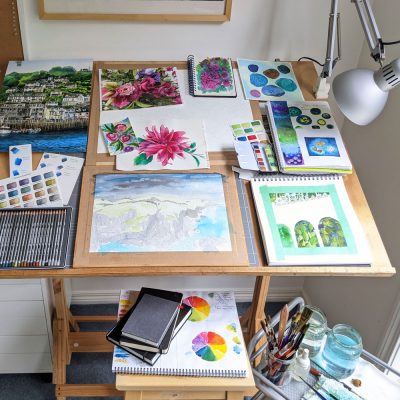Tube lining is a technique I’ve always enjoyed working with in my ceramics, and I thought I would have a go at transferring the principle to artwork. To tube line a tile or pot – a bead of wet clay is applied to the surface of the object forming enclosed spaces, this is fired and results in raised areas across the ceramic item.
Liquid glazes are then dropped into these areas, creating mini pools of deep colour that are contained within their boundaries.Using acrylic paints I set out to see if the same idea could transfer to canvas.
I began by using a small plastic bottle with a very fine nozzle (bought off the internet) that I filled with white acrylic paint diluted to about 80% strength with water, and outlined my design on a simple canvas board bought at my local art shop.
This created a white raised line on the canvas , which looks good, except if gets stained it by mistake with the paint colour. I have also experimented with PVA glue, and this creates a translucent raised area.
After letting the ‘piping’ dry overnight I then began to fill the areas with colour. I diluted the acrylic paint, and found that it pooled well if I raised the canvas up from my workbench at a slight angle, about 10 degrees or so. I found that different paint colours diluted with different characteristics, whilst the blue paints pooled nicely and the water ‘carried’ the pigment well, I found the yellow tones needed the help of an acrylic medium as well as water just to even out the distribution of colour across the pooled surface.
I’m referencing some Art Deco tiles for this experiment, so I thought it would be nice to recreate the idea by using a pair of square canvases that could be displayed side by side.

